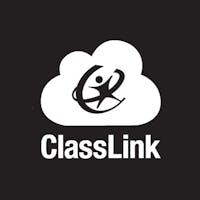Like campers to a crackling fire, district leaders will want to draw close to hear how Liverpool Central School District in New York slipped seamlessly into remote learning while hundreds of districts nationwide struggled to make the switch.
With nearly 7,000 students and 700 teachers, Liverpool had never tackled remote learning before March 23, 2020. But Director of Technology, Dan Farsaci, says they were equipped with the right tools for a successful start.
Their secret ingredients for a quick, easy switch to remote learning? A districtwide one-to-one Chromebook program, student connectivity data, Google Classroom and ClassLink's single sign-on (SSO) technology to tie it all together with easy access to apps, resources and websites.
Putting Tech in Students' Hands
After COVID-19, the district's one-to-one program expanded to take-home for all grades. So, families that needed devices at home visited schools to pick them up. The technology team set up a checkout procedure, where parents called and made an appointment to pick up their technology over three days. Pickup times were 10 minutes apart to ensure everyone could practice safe social distancing. The district also delivered devices or scheduled later pickups for those who couldn't make the initial times. Students received a Chromebook, a charger and, if necessary, a Wi-Fi hotspot donated by a local provider.
“We, in essence, provided devices and internet access to every student in our district. It was a huge team push,” explains Farsaci.
They also set up a technology helpline for families and students to call if they needed help. Three teacher assistants with technical specialization (TATS) and one member of the technology team handled the phones from home and used their existing helpdesk system remotely to generate support tickets.
Why Single Sign-On Was Crucial for Continued Learning
Farsaci says that once the technology was in students' hands and learning began, it was their SSO system's chance to shine.
Liverpool students and teachers had already been using ClassLink for eight years. Tech Support Specialist, Shawn Surma, says that meant students found and accessed curriculum such as educational apps, websites and documents the same way they had when they were in the classroom.
“They go to one place, the ClassLink portal, boom, everything is there,” explains Surma. “Their Google Classroom is already there; it's one of the icons, so are high-use programs like iReady and Achieve.”
ClassLink also made it incredibly easy to share lessons and content. For example, Surma says the district’s Executive Director of Curriculum, Math, Science, and Technology, Kasey Dolson, wanted to have math packets available immediately when schools closed.
“With one click on our end, saying, 'Make this folder a tile,' and she had a whole Google folder available to every student in grades 3 through 6. It automatically showed up in ClassLink. We didn't have to teach the students a new way to do something.”
1000% Growth in 8 Years
While Liverpool's tech team is only five members strong, technology and education apps play a huge role in learning districtwide, with programs like iReady launched over 492,000 times during the school year.
“That's almost half a million times students are accessing just one of our apps, and we have over 20 high-use apps. Trying to support that level of use with such a small tech team would not have been achievable without ClassLink, even before we saw a surge in use because of the switch to remote learning,” explains Farsaci.
Surma and Farsaci both say ClassLink use has grown by over 1000 percent since the district adopted the platform eight years ago. They credit a lot of that growth to ClassLink's Engagement Team, who reach out regularly to update the technology team on new features and explain how to use existing features they weren’t taking advantage of—all at no additional cost.
“ClassLink isn't just one program. It's this universal system that includes all kinds of things,” explains Surma. “Believe it or not, the original intent we had for ClassLink is almost non-existent now.”
When Liverpool initially adopted ClassLink, remote learning and even Chromebooks weren't ubiquitous, as they are now. The district chose ClassLink because it was operating system-agnostic: Students could use any device to access all programs from ClassLink's portal.
Over the years, ClassLink's Engagement Team has continued to work with Liverpool introducing new features.
“When ClassLink added Roster Server, it was a game-changer,” says Surma.
As he explains, automated rostering saved the district time and money. If a student is in a specific class, ClassLink automatically rosters that student into the correct group to receive all the necessary apps a teacher has assigned based on specifications such as grade-level or individualized education program (IEP). Surma says that can save him 40 hours a week during the busy back-to-school season.
Surma estimates that rostering with ClassLink also saved the district over $10,000 by making it easier to roster apps that require licensing. With ClassLink, only students designated in the student information system as needing specific reading and math apps receive access. Rostering with ClassLink ensures that they never exceed—and have to pay for—the number of licenses they'd planned on.
The district also saved money by switching from a competitor that, while free to districts, charges vendors that want to be rostered by their product. As Surma explains, those vendors then passed those charges on to Liverpool in their fees. “The cost difference was unbelievable,” says Surma.
Surma and Farsaci agree: Whether students are learning remotely or in the classroom, without ClassLink, the district technology team would need to triple in size to support their 9,000 users districtwide.
Surma emphasized, “We just don't have the resources to have that number of employees, having something like ClassLink helps us do our jobs very efficiently.”



